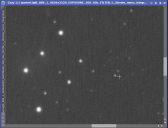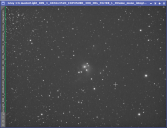Howdy, Stranger!
It looks like you're new here. If you want to get involved, click one of these buttons!
In this Discussion
Walking noise?
The attached image is a three hour integration using a 1600MM pro and taken through an LXtreme filter. None of the sub frames show this patterning, nor the Darks, dark flats or flats. It looks like walking noise to me but I dither 16 pixels between each frame. PDH2 is set to dither in RA only. Could this be the issue? The object is NGC7129 and the second pic is the entire frame.
Funny thing is I didn't get a similar effect when I photographed the same object through RGB and Lum filters
Any ideas?
Colin


Screenshot (59).png
808 x 615 - 497K


Screenshot (60).png
806 x 618 - 458K

Comments